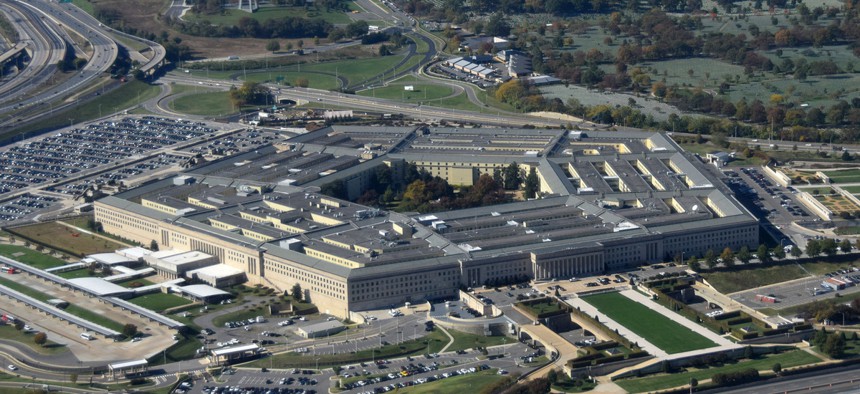Defense R&D Gets a Huge Boost Under the 2018 Omnibus

Ivan Cholakov/Shutterstock.com
But it’s not the only agency with more to spend on research.
If federal funding for research and development was a lottery, then the Defense Department just hit the jackpot.
The Pentagon would get $89.2 billion to pour into new defense technologies under the 2018 appropriations bill the House passed on Thursday. That’s a $16 billion—or 22 percent—increase from 2017 and $6.5 billion above the agency’s budget request for this year.
Those funds would cover initiatives at the Defense Advanced Research Projects Agency as well as a handful of critical projects, including the Future Vertical Lift helicopter program, space security systems and the beleaguered F-35 fighter rollout.
The legislation, which would fund the government through Sept. 30, redoubles the Trump administration’s commitment to military innovation, but unlike the White House’s 2019 budget proposal, it doesn’t include sweeping cuts to non-defense R&D. Some civilian agencies that saw R&D funds plummet under the president’s budget would get a modest increase under the omnibus bill.
A few areas of interest:
National Science Foundation
Congress allocated $7.8 billion to fund NSF through the end of fiscal 2019, with $6.3 billion dedicated to research and development. Among the R&D topics lawmakers highlighted as specific areas of interest were advanced manufacturing, cybersecurity and STEM education.
National Oceanic and Atmospheric Administration
The agency would get $5.9 billion, which includes full funding for two satellite programs aimed at improving weather forecasting and giving communities more advanced warning for natural disasters.
Health and Human Services
The legislation raises funding for the National Institutes of Health from $34 billion to $37 billion, with targeted increases for a number of research projects. NIH could devote an extra $414 million to Alzheimer’s research and another $140 million to advanced neurotechnologies programs.
The Center for Disease Control would also get $480 million to build a new biodefense research lab.
National Institute of Standards and Technology
Under the bill, NIST would receive $1.2 billion, with more than 60 percent allocated to helping “advance U.S. competitiveness and economic growth” and a reduction to “lower-priority activities.” The agency, which creates cybersecurity standards for the government and private sector, would’ve lost 18 percent of R&D funds under the president’s proposed budget.
Energy Department
The agency would get $727 million in funding for coal, natural gas and fossil fuel R&D, an increase of roughly 9 percent from last year. At the same time, the bill allocates almost $6.3 billion to exploring “next generation” energy sources and advanced computer systems, as well as $1.2 billion for nuclear energy R&D.
Congress also devoted almost $250 million to projects intended to strengthen the security of country’s electric grid.
Environmental Protection Agency
While the president’s budget cuts the EPA’s science and technology R&D dollars almost in half, the appropriations bill holds funding steady at $714 million. The legislation freezes the agency’s overall budget at $8.1 billion, and also includes amendments “to rein in harmful and unnecessary regulations.”
Homeland Security Department
The agency’s Science and Technology Directorate would get roughly $510 million to last through the end of fiscal 2020. Customs and Border Protection also receives a number of provisions part of the bill’s boost to border security, including $360 million for aircraft, sensors and surveillance technology.






